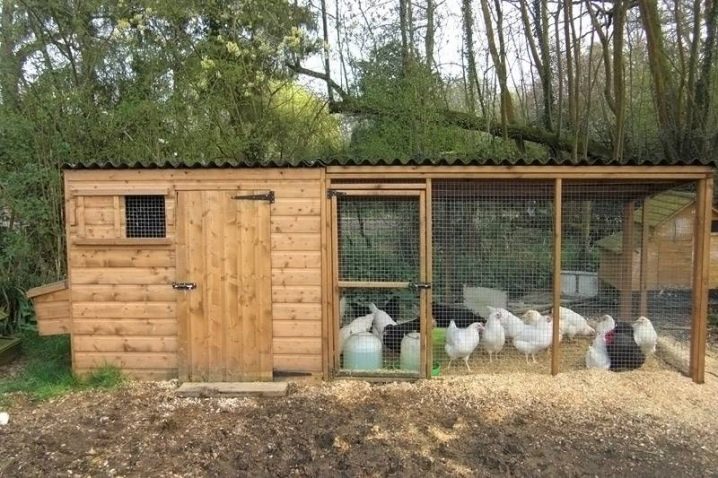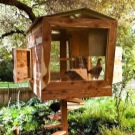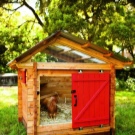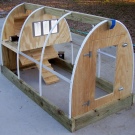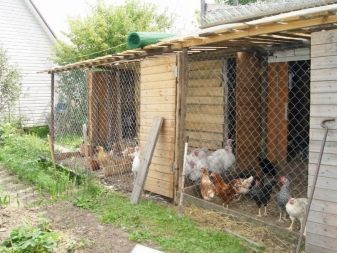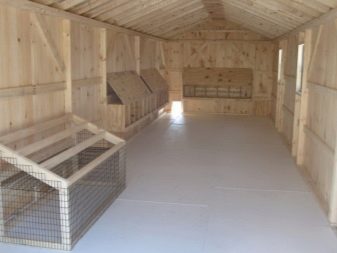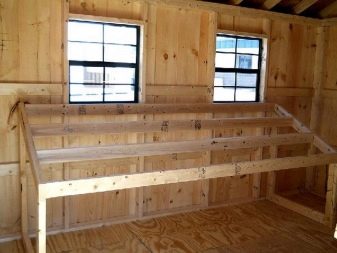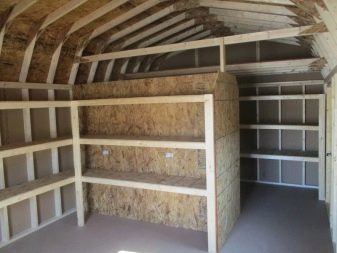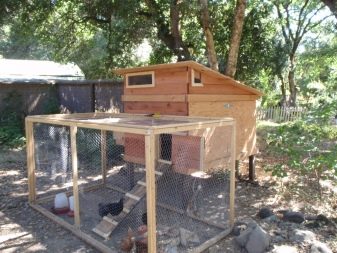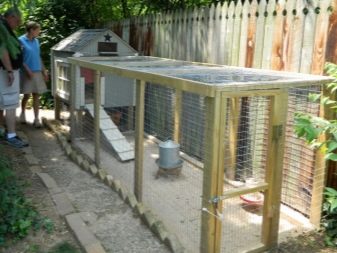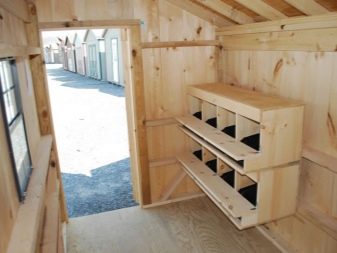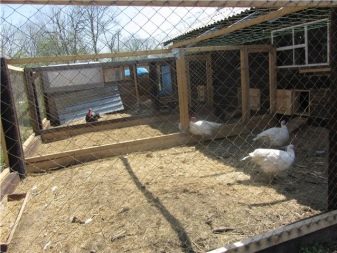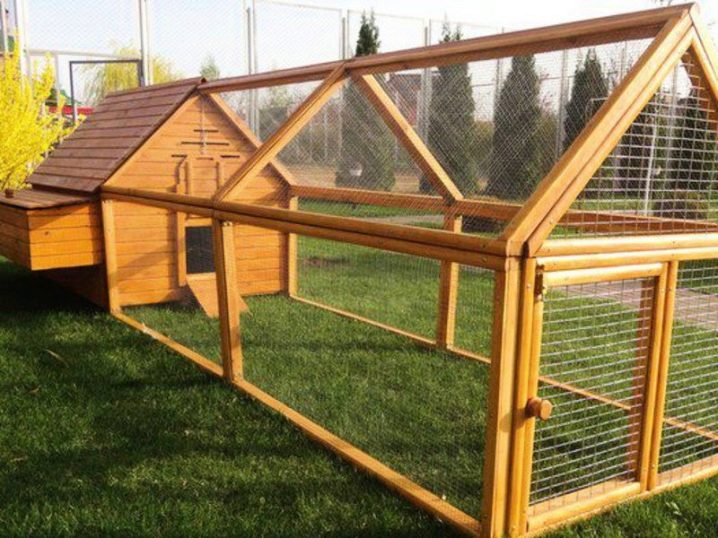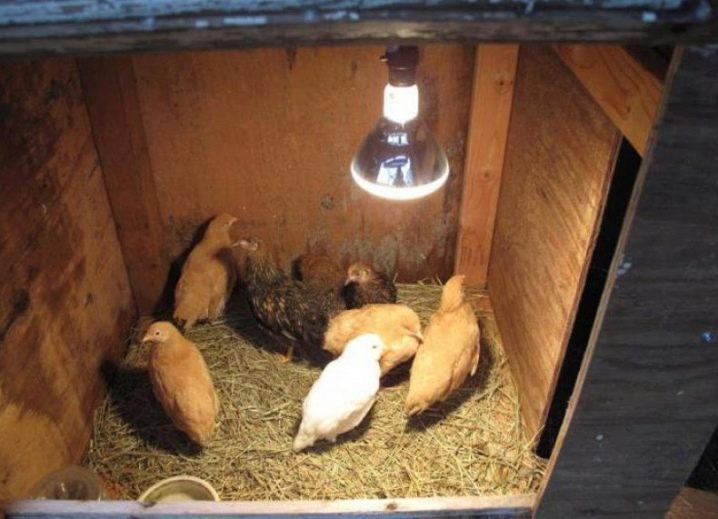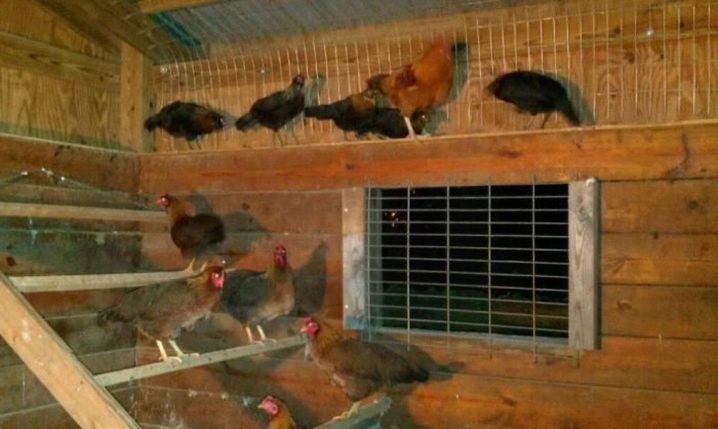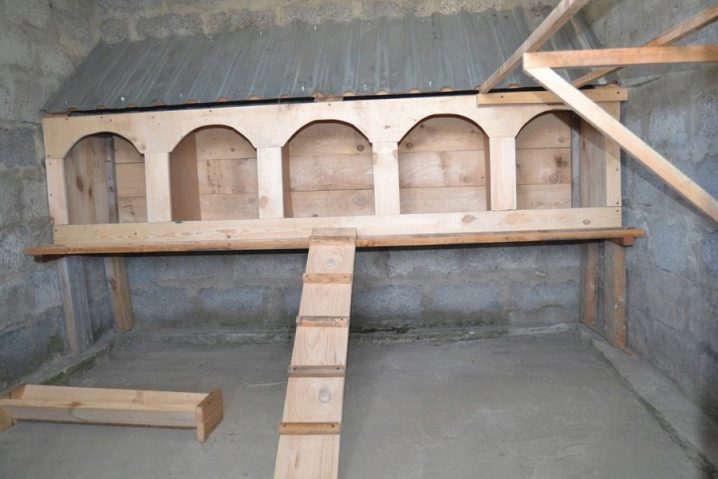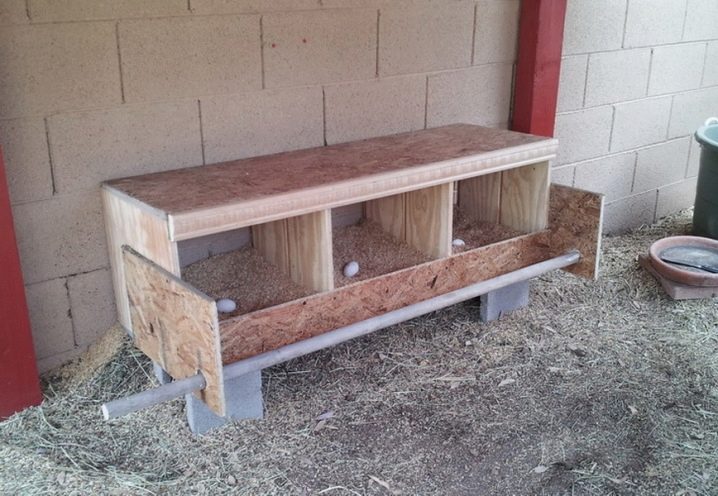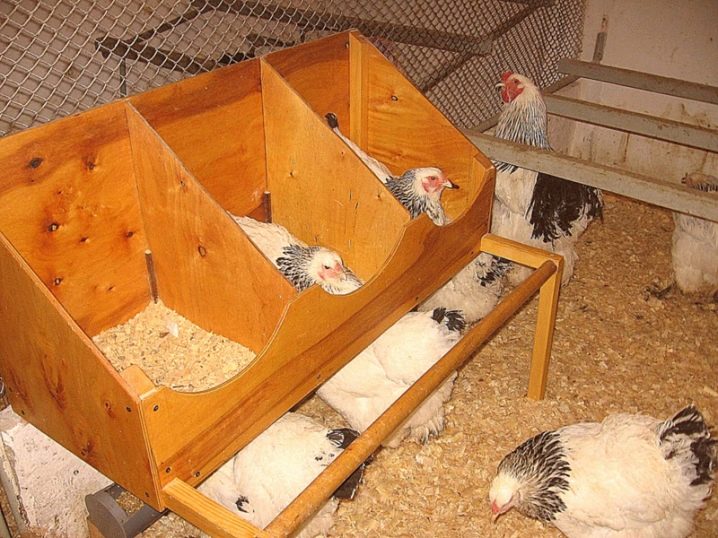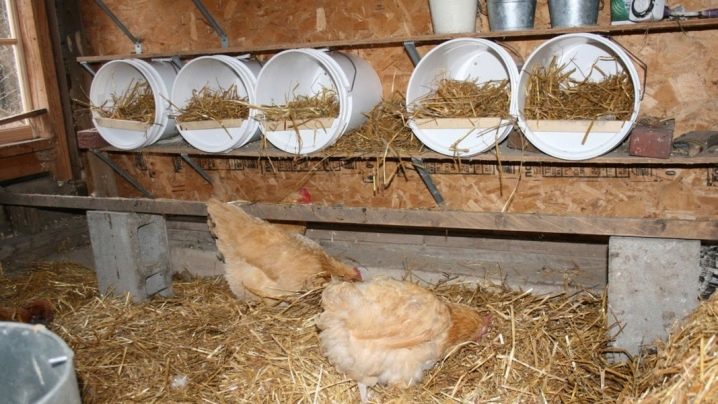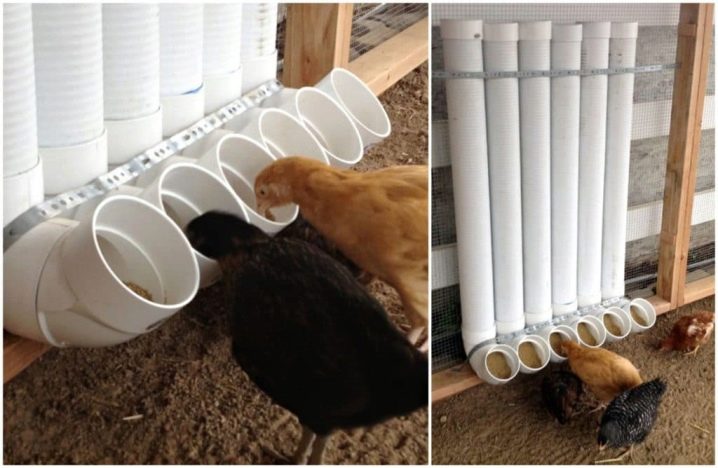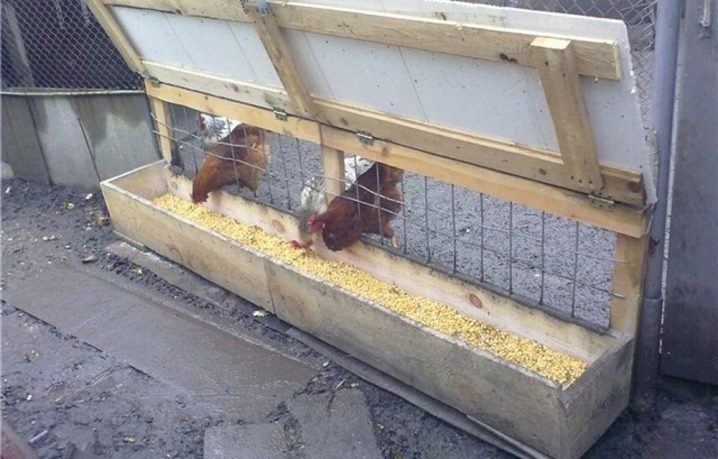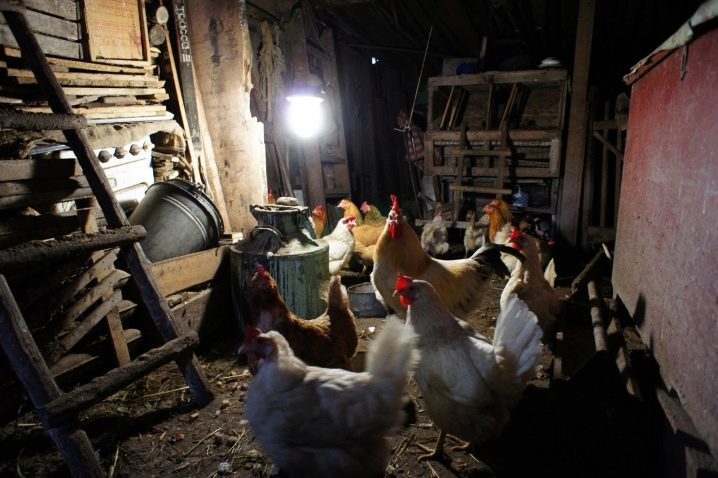Features and tips for setting up a chicken coop
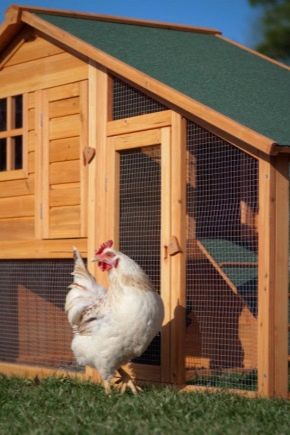
The summer cottage or cottage in the village is not only a break from the bustle of the city, but also an opportunity to provide the family with natural vegetables and fruits. Recently, among summer residents, there has been a tendency to master the next step of the farm - animal husbandry, so that fresh meat and dairy products are always on the table. For beginners, the easiest way to start with chickens is not so troublesome as it may seem at first glance, it can provide family with chicken meat and fresh eggs almost year-round.And even if you visit the country house only in the summer season - there is an opportunity to keep chickens from spring to autumn, as many village residents do.
Where to begin?
In order for chickens to be healthy and well swept, they need to provide comfortable conditions for their housing. The main of these conditions is the proper arrangement of the chicken coop. Whether it will be a newly erected structure or a barn already existing on the site - this is completely unimportant, the main thing is to create a suitable microclimate inside, to equip the space with everything necessary for comfortable living of poultry. It is quite possible to do it yourself, without the involvement of masters from the outside. Probably, it is not a secret to anyone that nests, perches and feeders must be present in the hen-house. But this is not the most important thing in the arrangement of the bird house. Growth, well-being and egg production in chickens are greatly influenced by air temperature, humidity levels, ventilation and, of course, lighting.
If you decide to use the old barn, just hanging a lamp in there and putting a feeder, then do not be surprised that the chickens will hurt and not be carried well.Here neither elite forage, nor advertised breed of hens will help. It is worth spending not too much time and effort on improvement, in order to get maximum return as a result. It is necessary to consider in order all the details of the proper arrangement of the chicken coop.
Features of planning
As with the planning of any structure, it is first necessary to calculate the space and draw up a detailed plan. This will save time and labor costs, as well as prevent errors that are usually found already at the stage of the settlement of living creatures. A chicken coop can be built from any available materials, be it a wooden bar, brick or cinder block. Structures made of wood are the simplest and do not require additional costs. The frame is sheathed with sheets of chipboard, fiberboard or from any boards that are in stock. If on the site there are already outbuildings, you can select one of them under the house.
Whichever option is chosen, the planning should calculate the required area and space for walking. The volumes will depend on the estimated number of birds, because the larger the population, the greater the space required for comfortable living. Considered the best size in 3 square meters. m for 2–3 hens.With a strict saving of space, these figures can be reduced to 1 square. m, but it should be noted that the closeness adversely affects the fecundity of the hens. The size of the enclosure for walking, respectively, should be many times larger. And this is reasonable, since chickens need activity in the fresh air:
- laying hens should not gain weight, sitting shut up, otherwise they will no longer rush;
- meat chickens only at movement and loads gain muscle mass, that is what they are intended for.
Lighting and ventilation
After the selection or construction of the premises, you can proceed to the internal work on the arrangement of the house. Light day and free air circulation is necessary for all living organisms for a full life. Therefore, even at the stage of development of the building, you should consider a place for a window opening (at least one) and ventilation outlets. Usually the coop window is cut in the wall at a ratio of 1:10. This will be enough for the flux of daylight.
For a comfortable stay of birds, additional lighting is required, which consists of several light bulbs. The number of light points depends on the size of the coop and suggests lighting above the feeders and perches.This is especially true of the winter period, when chickens from lamps can receive additional heat. For these purposes, lamps of red glow are installed - they heat the space clearly below them, which allows the birds to be under such a mini-heater. But in the area of nests, it is not necessary to plan additional lighting, as the bird prefers to sail in the twilight, in a calm atmosphere, away from the noisy companions at the feeder.
Ventilation is necessary for any building for normal air exchange, elimination of damp and musty odor. This is especially true of the premises where food is stored or animals are kept. Airing does not give a stable result, and in the winter is completely excluded. Therefore, even at the stage of the equipment of the coop, you need to take care of the creation of ventilation openings. For small rooms, designed for a dozen birds, you can restrict yourself to the simplest supply and exhaust system. The air ducts are made of two ordinary plastic pipes, one of which is installed under the ceiling for exhaust, and the other is lowered to the floor by 20 cm to force fresh air into the chicken coop.For the maintenance of a large number of birds in volumetric rooms, forced ventilation is used, which is capable of circulating oxygen throughout all parts of the chicken coop.
Wall and floor decoration
The walls and roof of the house should protect the inhabitants from the ingress of rain moisture and the occurrence of drafts. During the construction of the new building, these parts are prepared in advance, although inexpensive, but high-quality material for wall cladding and roofing is purchased. If under the hen house an existing barn is retracted, make sure that the roof does not flow, and that the walls are quite strong and do not form cracks. An ordinary barn of simple boards can be sheathed from the inside with sheets of plywood or with old wooden clapboard. For winter chicken coops under the skin must be laid insulation material. These can be artificial fillers or natural mixtures of clay and straw.
Remember that facing materials that birds can reach should be natural. In the chicken coop room, protruding pieces of polystyrene, stiffened polyurethane foam, or any other artificial fillers are excluded.Birds are able to peck any surface without parsing, which can lead to poisoning and death. After the completion of works on the arrangement, the walls of the coop must be covered with a layer of lime. Lime mortar reduces the risk of the spread of pathogenic bacteria, the proliferation of parasites, tormented birds, and also ensures the longevity of the wood.
Arranging the floor in the house occurs in two stages and deserves special attention, as it must be warm.
- The main floor is made of concrete or wood. In the first case, a hydro- and heat-insulating material is placed under the concrete screed. If the floor is planned to be wooden, then first the rough floor is lined up with any non-conforming boards, a layer of gravel or sand is poured for insulation. The finishing floor (the floor itself) must be from a smooth cut board. They should be painted, which will extend the life and protect against insects. Care should be taken to the advice to cover the floor of the house with old linoleum. If the material is non-industrial category, then quickly crumble under the blows of the beak, which means that the pieces will fall into the esophagus birds.
- The second stage of the floor is a warm beddingwhich change as pollution. The main floor, like the walls, is covered with lime for disinfection, followed by a five-centimeter layer of sawdust or sand. In winter, peat is added to this bedding, due to which it becomes thicker and warmer. In some farms, instead of sawdust and sand, straw is used, but this litter quickly gets wet and requires frequent replacement.
How to install nests and perches?
After completing all the work on finishing the building, they start equipping the internal space. For chickens, such a home space is made up of roosts, where the bird spends most of the time, as well as nests, where eggs are laid. The roost is a horizontal pole, located not lower than 50 cm from the floor, on which chickens sit in a row, clasping it with their paws. For the convenience of the hens, the pole should be of a certain thickness — about 5 cm in diameter. The bird should not be wrapped around a thicker pole, and on a thinner layer it cannot sit steadily. Especially when you consider that birds sleep on perches. In addition, thin poles will sag under the weight of several birds.
The length of the pole is calculated by the number of individuals. For each chicken should be at least 25-30 cm of free space. The pole is made of a wooden bar, previously rounding it and sanding it so that there are no knots and burrs. Perches are located in increments of each other at a distance of 35 cm; they can walk by a towering gently sloping ladder. The last pole to the wall should not be closer than 25 cm.
When installing the nests should choose the most secluded place in the chicken coop, which gets less light, and where the bird will feel privacy and comfort. Wooden boxes with low front partitions are located at the same height as the roost. The nest should fit the bird in size and perform a single function - laying eggs.
The following sizes are considered optimal:
- width and height - 30 cm;
- depth - 40 cm.
Chickens are unpretentious in terms of nests, therefore, in the absence of material, plastic buckets, turned upside down, basins, baskets or boxes can be used. But it is better that each "house" had a wall and a roof. In the nest necessarily laid out bedding of hay or sawdust. To make it easy for the bird to climb to a height, a narrow lifting ramp is installed - a board with nailed transverse slats.
How to equip drinking bowls and feeders?
The main task in the equipment of the place for food is to make the bird not to scoop out the food from the containers, not to turn over the troughs and the feeders, and not to get into them. If you put the usual bowl, as for other animals, chickens will fight for the place of access to it, and the contents themselves will quickly spoil the trash and droppings. To avoid this and streamline the process of feeding, feeders and drinkers make a closed type with metered feed content. Feeding equipment can be purchased at the store or do it yourself from scrap materials. The simplest options are gutters with holes. You can use plastic plumbing pipes — cut slits that are suitable for the diameter of them, and install “knees” at the edges into which you can pour water or fill up food.
A metal mesh separator is placed on the open feeders, so that the bird can reach the feed with its beak but not get into the tank. For stability, the equipment is attached to the wall, and in size it must be in accordance with the number of pets, otherwise there will be no fights. Drinkers are made from inverted plastic bottles,but in this case it is necessary to make efforts and dexterity. It is much easier to purchase the store version with dispenser.
Arrangement paddock for walking chickens
Another important aspect of arranging a comfortable chicken coop is an aviary for walking birds. As already noted above, chickens need physical activity and fresh air. For laying hens it is a guarantee of good egg production, and for broilers it is a build-up of meat layer. Walking the birds in an unenclosed area is dangerous, they will peck out and trample down landings, and there is a risk of other animals and birds of prey attacking them. As a rule, the size of the enclosure is the sum of 3 square meters. m per bird, and its height must be at least 2 m, so that the chicken could not fly it. Pillars are driven in along the perimeter, and the space is enclosed with a fine metal mesh. If there are birds of prey in your area, be sure to stretch the net and on top of the aviary.
Useful tips
Every farmer has his little tricks for breeding chickens, and Livestock forums have some interesting farming ideas.
- Hens for a good rest must sleep in total darkness.But there is a problem with a sharp turn off of the light, since the hens do not see in the dark and will not be able to settle on roost in time. For a gradual blackout using phased power outages. The easiest way to do this is to purchase a dimmer - this is an electronic device for adjusting the brightness of the light.
- At the equipment stage of the walls, a small hole-hole can be made from the bottom of the chicken coop door. Through it, it will be convenient for the bird to go out into the yard, and for you - to clean up the dirty litter, raking up the sewage to the exit to the street. The size of the manhole should correspond to the size of the largest individual in the hen house.
- There are various preparations for parasites on the bird - ticks, fleas, and puff-eaters, but it is easier to install a spacious container with wood ash on the territory of the house. In it, the birds will be happy to “bathe” and clean the feathers, thereby freeing themselves from uninvited guests.
For information on how to properly equip the chicken coop with your own hands, see the next video.
